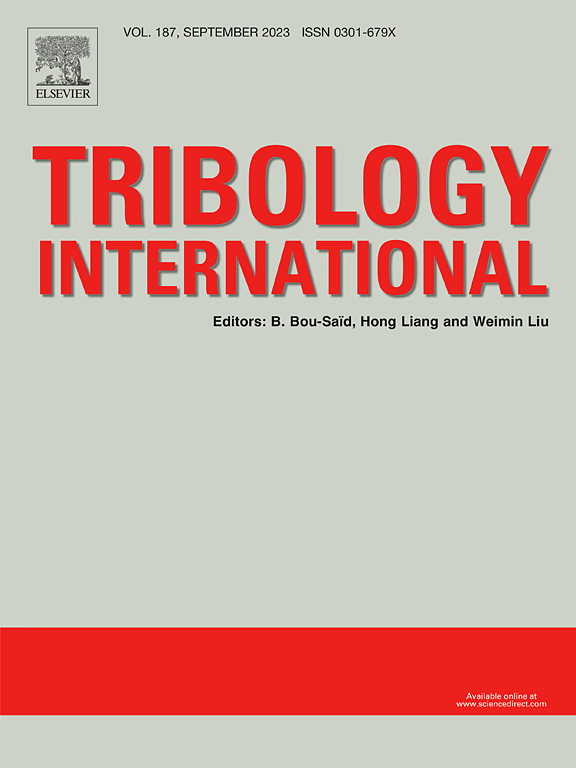正火温度对新型高铬铸铁微观组织特征、机械性能和磨损性能的影响
IF 6.1
1区 工程技术
Q1 ENGINEERING, MECHANICAL
引用次数: 0
摘要
研究了高铬铸铁在不同正火温度(950 °C、1000 °C、1050 °C、1100 °C)下的显微组织、机械性能和磨损性能。马氏体含量与正火温度成正比,但 1100 °C 时除外,因为出现了残余奥氏体。随着温度的升高,一次碳化物含量减少,而二次碳化物含量先增加后减少,从而使在 1050 °C 回火时观察到的机械性能更加优异。优异的硬度和强度提高了表面变形抗力,包括基体的加工硬化和碳化物的堆叠断层锁定,阻碍了位错滑动和材料剥落,从而在 1050 °C 正火时获得了优异的耐磨性能。此外,随着温度的升高,磨损机制也从氧化/疲劳磨损转变为磨料/粘着磨损。本文章由计算机程序翻译,如有差异,请以英文原文为准。
Normalizing temperature influence on the microstructure characteristics, mechanical and wear performance of a novel high chromium cast iron
The microstructure, mechanical and wear behavior of a high chromium cast iron were studied at different normalizing temperatures (950 °C, 1000 °C, 1050 °C, 1100 °C). The martensite content was proportional to the normalizing temperature except at 1100 °C because of the appearance of retained austenite. As the temperature increased, the primary carbide downsized whereas the secondary carbide content first increased but then decreased, contributing to the superior mechanical properties observed tempered at 1050 °C. The superior hardness and strength improved the surface deformation resistance, including enhanced work-hardening in the matrix and stacking fault locks in carbides, hindering dislocation slipping and material spalling, thus achieving excellent wear properties when normalized at 1050 °C. Moreover, the wear mechanism changed from oxidative/fatigue to abrasive/adhesive wear as the temperature increased.
求助全文
通过发布文献求助,成功后即可免费获取论文全文。
去求助
来源期刊

Tribology International
工程技术-工程:机械
CiteScore
10.10
自引率
16.10%
发文量
627
审稿时长
35 days
期刊介绍:
Tribology is the science of rubbing surfaces and contributes to every facet of our everyday life, from live cell friction to engine lubrication and seismology. As such tribology is truly multidisciplinary and this extraordinary breadth of scientific interest is reflected in the scope of Tribology International.
Tribology International seeks to publish original research papers of the highest scientific quality to provide an archival resource for scientists from all backgrounds. Written contributions are invited reporting experimental and modelling studies both in established areas of tribology and emerging fields. Scientific topics include the physics or chemistry of tribo-surfaces, bio-tribology, surface engineering and materials, contact mechanics, nano-tribology, lubricants and hydrodynamic lubrication.
 求助内容:
求助内容: 应助结果提醒方式:
应助结果提醒方式:


